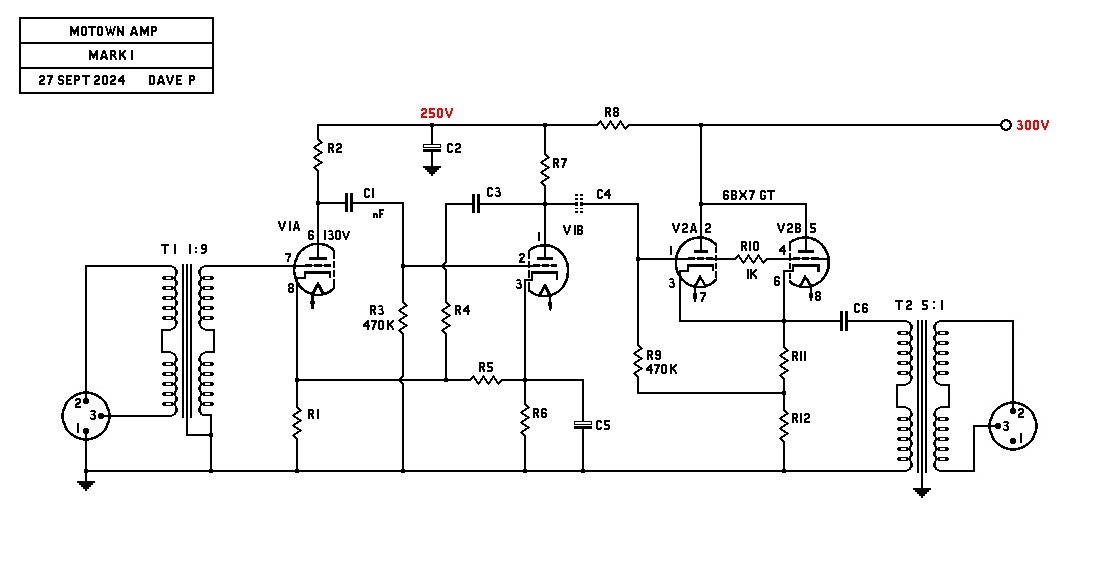Continuing my calculations:-
To find the operating points for the tubes we need to work backwards from the output. We are given that clipping started at +27dBm (600 ohms).
This is 17.35Vrms on the secondary, therefore there must be 5x 17.35V on the primary which is 86.75V . As the CF has a gain of 0.9, the drive voltage must be 86.75/0.9 = 96.4V. I have previously calculated the gain of the two tubes with NFB to be 30dB, therefore the input voltage to the first tube must be 30dB less or 96.4/31.62 = 3.05V at clipping. From this we can say that the first tube will clip at 3.05 x 2.828 =8.62Vp-p, dividing this by two gives us the cathode voltage =4.31V. If the IPT is 1 : 9, then the input to the amp would be 4.31/9 = 480mV which sounds like the right ballpark to me.
A cathode voltage of 4.3V puts us in ECC82/ 6SN7/ 12AU7 territory.
I am drawing up a schematic based on the V72 but with triodes instead of pentodes.
best
DaveP
To find the operating points for the tubes we need to work backwards from the output. We are given that clipping started at +27dBm (600 ohms).
This is 17.35Vrms on the secondary, therefore there must be 5x 17.35V on the primary which is 86.75V . As the CF has a gain of 0.9, the drive voltage must be 86.75/0.9 = 96.4V. I have previously calculated the gain of the two tubes with NFB to be 30dB, therefore the input voltage to the first tube must be 30dB less or 96.4/31.62 = 3.05V at clipping. From this we can say that the first tube will clip at 3.05 x 2.828 =8.62Vp-p, dividing this by two gives us the cathode voltage =4.31V. If the IPT is 1 : 9, then the input to the amp would be 4.31/9 = 480mV which sounds like the right ballpark to me.
A cathode voltage of 4.3V puts us in ECC82/ 6SN7/ 12AU7 territory.
I am drawing up a schematic based on the V72 but with triodes instead of pentodes.
best
DaveP








